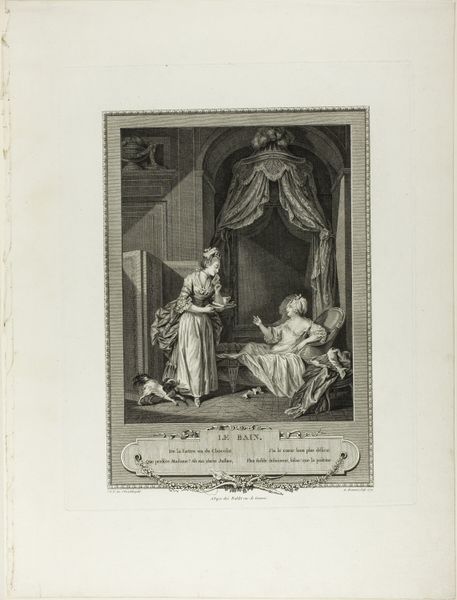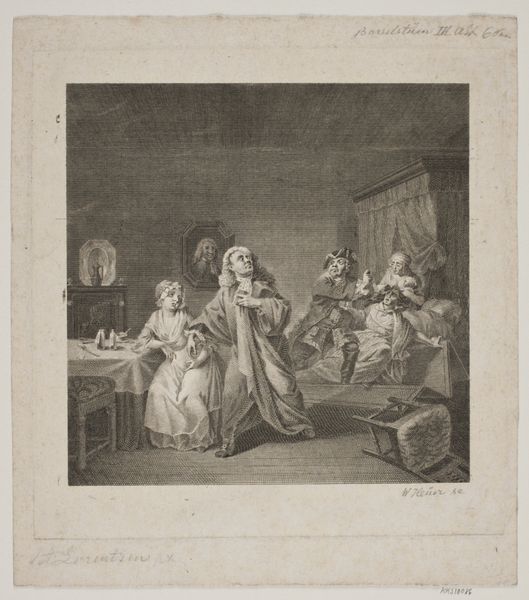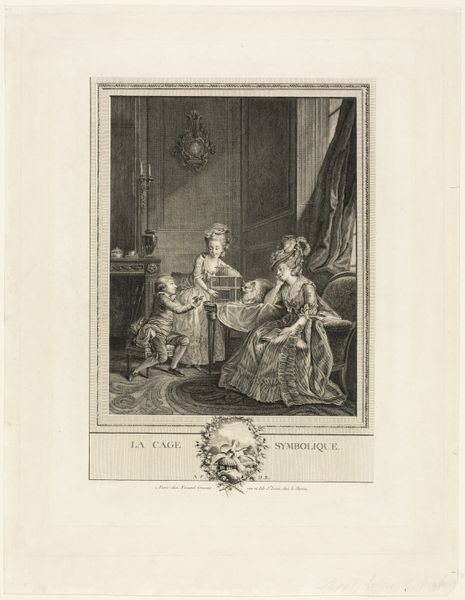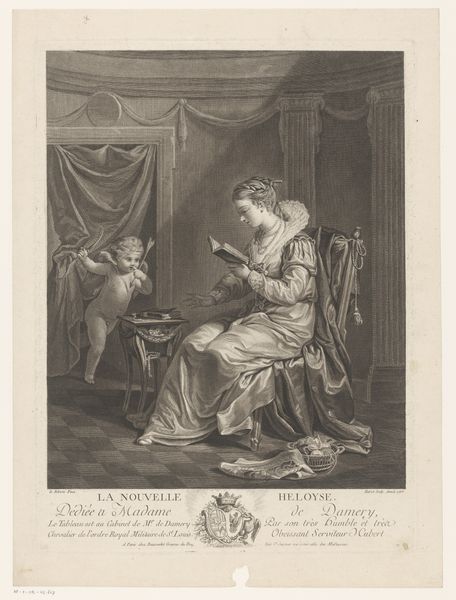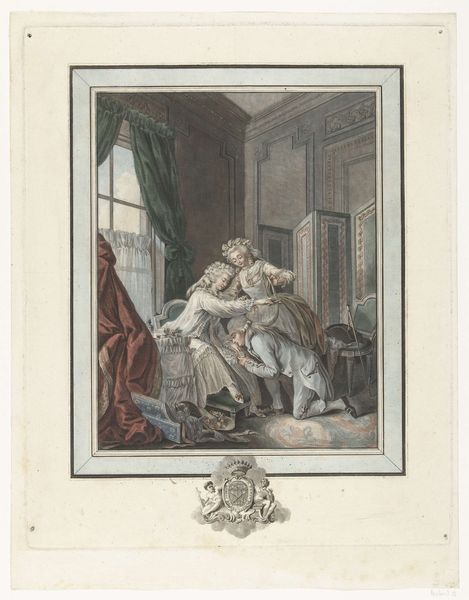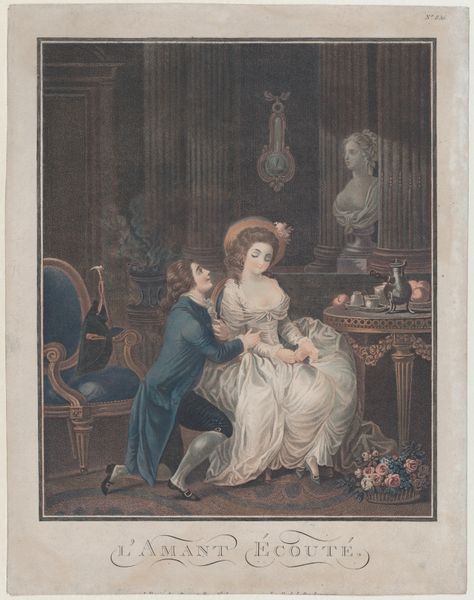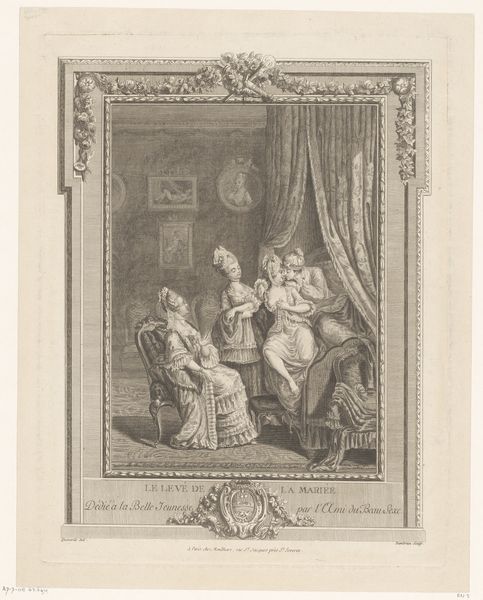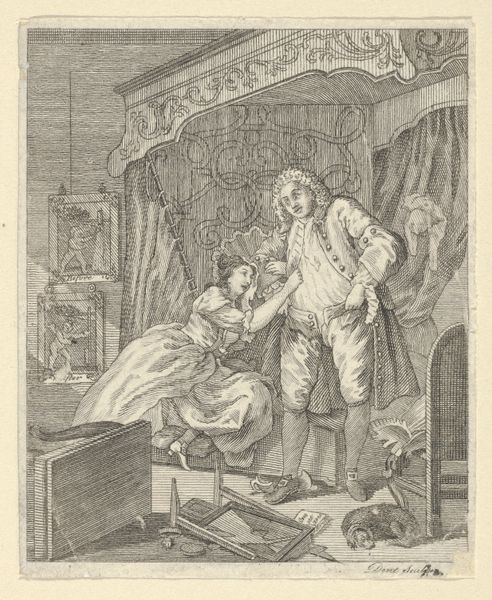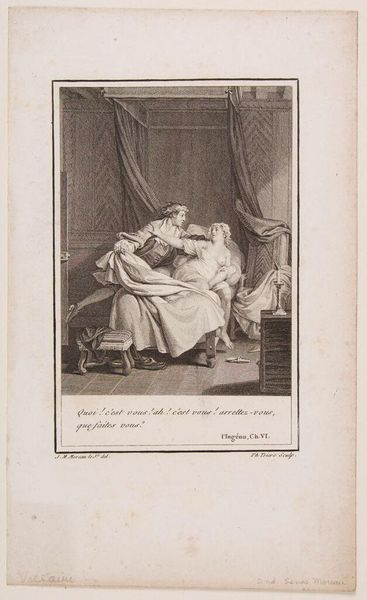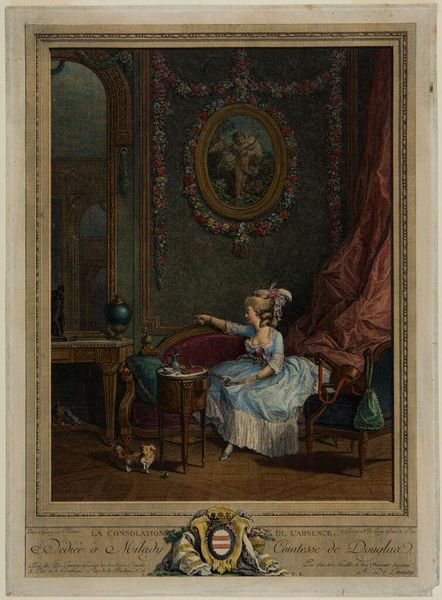
Dimensions: height 369 mm, width 270 mm
Copyright: Rijks Museum: Open Domain
Curator: What a charming domestic scene! This is "Le Bain," an etching and engraving by Antoine Louis Romanet, created in 1774. Editor: My initial reaction is one of soft indulgence, look at the textiles. There's such an emphasis on draped fabrics, from the bed curtains to the lady’s robe tossed carelessly aside. It almost feels decadent. Curator: Indeed. Romanet, as a printmaker, was participating in a huge industry of imagery circulating amongst the rising middle classes in pre-Revolutionary France. Images like this were consumed, collected, and discussed widely. They provide a keyhole view into the aesthetics and social values of the era. Editor: It makes me wonder about the labor involved. The making of the clothes, the creation of the dyes. Someone painstakingly crafted every element in this tableau, not just Romanet the artist. Curator: Absolutely. The original painting that this print reproduces may very well have been commissioned as a status symbol. Owning a reproduction like this, though, made elements of that lifestyle accessible to a broader audience. It fueled aspirations. Editor: Do you think the fine lines are meant to mimic fabric, creating visual parallels and adding an emphasis on how this piece reflects craft practices? Curator: That's an interesting point. The etching process allows for the replication of details. Notice how the lines also delineate class distinctions. The lady in the bed versus the attendant bringing the refreshment - there's a social narrative woven right into the fabric of the print itself, pun intended. Editor: So, this isn’t just about the artistry, but about understanding what that artistry meant within its socio-economic structure and how wealth affected making. It highlights a moment in time deeply intertwined with materials and methods of fabrication. Curator: Precisely. Studying "Le Bain" prompts us to think about how visual culture operates as both a reflection of and a participant in social relations. Editor: Looking closely at the object then shows me its power as evidence to learn what it meant to exist at a given moment and understand what everyday work looked like. Curator: Thank you, it offers a potent reminder that the seemingly innocent scenes of the past are layered with meaning and social implications.
Comments
No comments
Be the first to comment and join the conversation on the ultimate creative platform.
